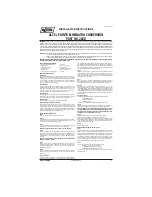
29
TRANSPORTING
CHILDREN
IN SAFETY
For optimal protection in the event
of a crash, all passengers must be seat-
ed and wearing adequate restraint sys-
tems.
This is especially relevant for chil-
dren.
A child’s head is larger and heavier
than an adult’s head with respect to
their body weight. Moreover, a child’s
muscular and bone structure is not ful-
ly developed. For these reasons, chil-
dren require specific restraint systems,
different from those required by adult
passengers.
Child’s restraint systems are classi-
fied into the following four weight
groups,
fig. 16
:
Group 0
weight 0-10 kg
Group 0
weight 9-18 kg
Group 0
weight 15-25 kg
Group 3
22-36 weight kg.
The groups partially overlap. This is
because there are systems which cov-
er more than one weight group.
Children weighing more than 36 kg
or taller than 1.5 m are, with reference
to restraint systems, considered adults
and can wear normal seat belts.
fig. 16
P4E00197
The seat shown in fig. 16 is suitable
for children weighing between 18-36
kgs.
20-63 03/03/2003 06:02 PM Page 29
Summary of Contents for 2003 Palio
Page 1: ......
Page 150: ...149 NOTES 144 152 03 03 2003 07 30 PM Page 149...
Page 151: ...150 144 152 03 03 2003 07 30 PM Page 150...
Page 155: ...144 150 03 03 2003 07 02 PM Page cop2...
Page 156: ......
















































